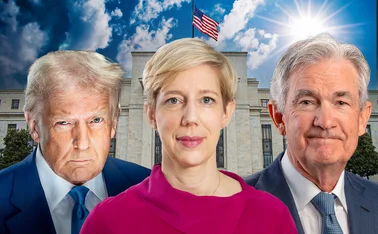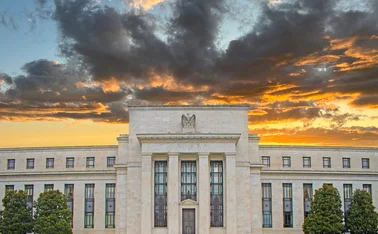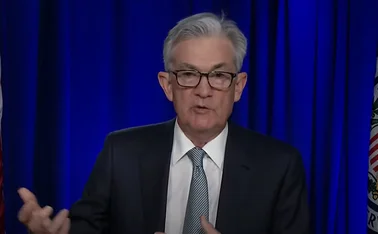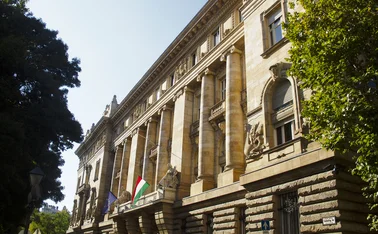
Central banks adopting social media at different paces, finds CBJ study
A multi-speed approach to social media
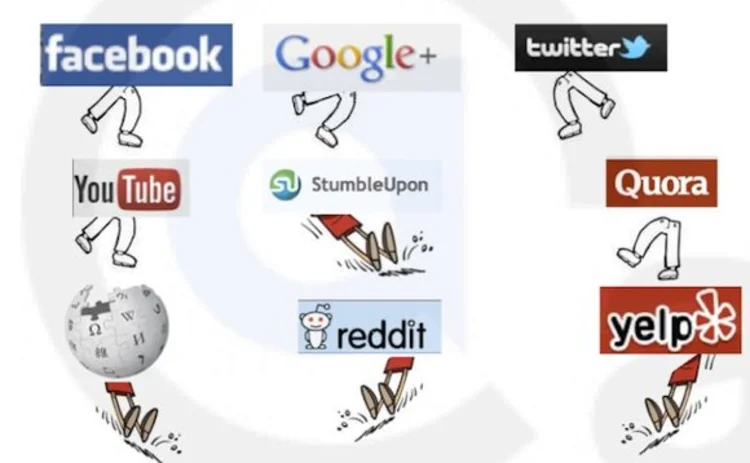
[ASSET_HREF_ERROR]
The world has witnessed a proliferation of news sources and information channels during the past decade. Major media companies put out stories almost minute-by-minute via a range of delivery mechanisms; while non-traditional ‘bloggers’ have gained substantial followings by embracing internet technology to publish their views. This means simply producing a message on a page in one part of the internet in the hope that it reaches its intended audience is an increasingly inefficient way of communicating. Moreover, it is easy for messages to become distorted and lost in a sea of information.
This poses a substantial challenge to central banks, which traditionally can be cautious adopters of new technology. When Steve Hanke, professor of applied economics at the Johns Hopkins University, and his colleague Michael Morgenstern, conducted an online usage study of central banks in 2001,1 51 institutions had no web presence whatsoever. Hanke and Morgenstern cited the statistic as a contributing factor to the “deplorable” lack of transparency provided by central banks.
The situation has changed during the past 12 years, with every central bank of the 181 analysed for this article operating a website. What still persists, however, is a wide divergence between the usability of these websites, the amount of information they provide and the extent to which central banks are embracing newer online technologies to reach their audiences.
A minority of central banks have failed to expand their websites much beyond a landing page with the most basic of contact details. The Bank of Burundi’s website is a good example of this basic approach. But many other central banks have at least sought to offer the information available on their websites in the form of a really simple syndication (RSS) feed or an e-mail alert, to help minimise the legwork of the central banks’ audience in finding it. And, now, an increasing number of central banks are turning to social media in an attempt to thrust information directly into readers’ palms.
As of April 19, 60 central banks operated at least one account through either Twitter or Facebook, the two most popular – at least in the English-language speaking world – social media networks. Of these, 22 use both Twitter and Facebook. A further 29 central banks solely use Twitter, while nine use only Facebook.
It should be noted that evaluating the online presence of central banks is far from an exact science. There are questions surrounding the authenticity of many social network accounts purporting to belong to a central bank, which highlights one of the dangers of social media as well as potential problems if central banks fail to monitor this area.
Nigeria provides a useful example of the issues that can occur. The Central Bank of Nigeria this year forced the closure of more than 100 social networking accounts impersonating its governor, Sanusi Lamido Sanusi. A central bank spokesperson accused the impersonators of attempting to “tarnish and malign” Sanusi and cause “disaffection in the country”. While not every central bank impersonator is motivated by the same malicious intent, it can be difficult to substantiate who is running a social media account, with a large proportion of the genuine central bank accounts on Twitter remaining unverified.
Of the central banks that operate an account on Twitter and/or Facebook, more than half are based in Europe and North America, around a third are from South America and Asia, and the rest are split between Africa and Oceania.
The disparity in the geographic use of social media is matched by the way central banks use networking accounts, which tends to include a combination of data releases, speeches from senior members of staff, research publications and employment vacancies.
The right tool for the job
However, some central banks have a clear division of labour between the social media tools they deploy when it comes to communicating particular types of information.
Dora María de Pérez Calles, head of communications at the Central Reserve Bank of El Salvador, said this is a tactic deployed by the Central American institution. The central bank uses Facebook predominantly to target students, and releases “small educational capsules” about a range of economic and financial concepts. In one of the more novel uses for social media, Pérez said the account receives requests from students for information for homework, to which the staff “try and respond immediately”. Twitter, she explained, is used primarily for data. The account mostly posts information related to economic growth, trade and family remittances. By contrast with Facebook, the central bank staff members “are not expected to respond to any of the tweets” they receive.
The central bank is planning to expand its online presence into YouTube, which hosts video feeds, which Pérez said will likely feature interviews conducted by Carlos Acevedo, the central bank’s president, and additional educational videos. “We think Twitter will help us with press, TV and radio journalists, and YouTube will be helpful to post videos outside our website, with the possibility to reach more people,” she said.
The Federal Reserve Bank of Dallas takes the division one step further, and operates three distinct Twitter accounts: one for general releases, one targeted at ‘economic education’ and another specifically to publicise job opportunities. A spokesperson for the Federal Reserve Bank of Dallas said the institution had found social media “very effective in broadening the reach” of its public communications, and it is “trying to keep up with the changing ways people access information”.
“We’ve focused mainly on Twitter, which we feel is the most appropriate social media channel for the Dallas Fed. It has been particularly useful in communicating interesting quotes from Dallas Fed president Richard Fisher’s public speeches and media interviews,” the spokesperson said. “We have also been successful in using Twitter to raise awareness of our regional economic research for folks in the Eleventh Federal Reserve District.”
Communicating “interesting quotes”, however, can be a risky business: in 2011, the Banque de France tweeted remarks made by its governor, Christian Noyer, in a newspaper interview, which provoked a storm of controversy online. In his comments, Noyer condemned the UK for having “a bigger deficit, as much debt, more inflation [and] weaker growth” than France at around the time rating agencies were considering downgrading France’s debt. International commentators and casual tweeters rushed to debate the point and to goad the Banque de France, demonstrating the potentially negative feedback loops between the central bank and the populace.
Bernanke big on blogs
Ben Bernanke, chairman of the Federal Reserve, has praised social media as a “really convenient way to communicate quickly to a group of people, to exchange ideas, and to keep track of what’s going on in a particular area”, but also acknowledged its limitations.
Speaking after an event at the Gerald Ford School of Public Policy, Bernanke revealed he reads a host of online blogs, which he said have “become a pretty important source of intellectual exchange”, whereas on Twitter “140 characters kind of limits the discussion”.
The Bank of Estonia, for example, publishes the viewpoints of individuals or groups of members of staff, as do many of the regional Federal Reserve banks, including Dallas, which have embraced blogging as a format for researchers to present short-term perspectives or to publicise particular issues.
“It used to be if you were an academic and wrote a paper it would be three years after you wrote the paper before anyone knew what you were working on,” said Bernanke. Even in producing working papers, which are widely and quickly published on central bank websites, Bernanke said, researchers must conduct research and write the paper before their viewpoint is broadcast. “What if you had a shorter perspective you wanted to put out there?”
Blogs, he believes, bridge this gap. “The internet has provided useful ways for people to communicate and discuss interesting ideas on monetary policy and everything else,” said the Fed chairman. “It has been the next natural step for creating a conversation among people. I think that has been very constructive.”
Lagarde’s legion of followers
Bernanke does not have a public Twitter account – although much like Sanusi, there is a legion of impersonators – but Christine Lagarde, the managing director of the International Monetary Fund (IMF), does. At the time of writing, Lagarde had close to 118,000 followers; 6,000 more than the IMF itself. On the Chinese equivalent of Facebook – Weibo – she has apparently amassed more than two million followers, according to the IMF.
Nemat Shafik, an IMF deputy managing director based in Washington DC, said social media has helped the Fund reach new, younger audiences. Speaking in London in March, she cited research that showed that the public’s perception of the IMF has improved as awareness grows. “The more people know about us, the less negative they become – at times, they even think we are doing a good job and that we should do more to push governments!” she declared.
This highlights the attraction of engaging with an organisation and its values on a more personal and intimate level. “In this new world of horizontal trust, the connections transcend geographic and political borders,” Shafik said. “They are global. And they are human.”
Public participation
Nino Pagava, a member of the governor’s office at the National Bank of Georgia (NBG), also emphasised the interactive nature of social networks and the way this has personalised the NBG’s relationship with the outside world. In addition to receiving news in a variety of formats, she said readers are also able to “openly ask any question”, and can participate in surveys and view video materials easily through sites such as Facebook.
Pagava identified a wide range of users of the NBG’s social networks – including both financial and state institutions, as well as the general public – and said the pages are designed to be open to anybody who needs “advice or assistance from the central bank”. Consequently, Pagava said that “nowadays the NBG’s Facebook page is more popular than the NBG’s web page among the population”.
The South African Reserve Bank’s (Sarb) head of group strategy and communications, Hlengani Mathebula, also believes Twitter is a “useful tool for two-way communication with the public”, but in contrast to the NBG, says that Sarb finds it most effective for publicising new information and redirecting users to the central bank’s main website.
Beyond this, Sarb also uses social networks more actively in information campaigns.
A model of communication
Earlier this year, Sarb announced the launch of a new banknote series with improved security features and bearing the image of former president and anti-apartheid leader Nelson Mandela. The central bank’s communication team publicised the notes on Twitter, Facebook and through an ‘interactive micro-site’ designed for mobile devices.On the day of the launch, Mathebula said, the new banknotes were a trending topic among Twitter’s South African users. “Together, all these platforms enhanced the effectiveness of the awareness campaign on the new banknotes,” Mathebula said.
Sarb is one of the most frequent tweeters in Africa, as highlighted in Figure 3, having posted 707 messages through the format – only marginally behind the continent-leading Bank of Uganda. But across all central banks that operate a Twitter account, France is by a distance the most frequent user, with 6,077 messages sent since its inception.
The frequency of use mirrors the geographical dispersion of users, as North and South American central banks, along with their European counterparts, have more accounts registered and are more active on them. This is tempered by the fact that central banks set up accounts at different times – for instance, the Reserve Bank of New Zealand, currently with 35 tweets, has only recently embraced social media.
However, tweeting in large quantities does not necessarily guarantee a large audience. In terms of followers, the Bank of Mexico leads the way with more than 107,000. The Central Bank of Colombia and the Federal Reserve have similar followings of around 63,000 and 60,000 respectively.
The ECB, with in excess of 56,000 followers, Bank Indonesia and the Bank of Japan, both with nearly 50,000, are close behind. The National Bank of Georgia, with only 37 followers, is a little way back.
The Federal Reserve has, by a distance, the largest followers to tweets ratio. At the time of writing, it had accumulated almost 92 followers per tweet, while the Bank of Canada and Reserve Bank of Australia had attracted just over 62 and 42 respectively. In contrast, the National Bank of Denmark receives the least reward for its efforts with only 0.12 followers per tweet.
Experimentation period
Don Abel, formerly an assistant governor of the Reserve Bank of New Zealand (RBNZ), is an ardent supporter of incorporating social networking into central banks’ communication policies, as he believes it provides an opportunity to convey information in a straightforward way. “It is here to stay, and it is certainly not a fad,” he stressed.
Abel has also been involved in the production of communication projects at the RBNZ, including videos and podcasts, which he believes have the potential to be more engaging than more traditional communication policies. “Important concepts could be presented graphically, with a voice-over, in a way that captured the attention of viewers while imparting knowledge,” he said. “Videos can be dynamic and colourful, far better than a staid website read-through or a hard copy publication.”
From the central bank’s perspective, video content can reach a lot of people at a minimal cost, he said, while the content can be updated easily. But Abel did confess that making videos go ‘viral’ – where they catch on well beyond a pre-determined group – is a “work in progress for us”.
Nonetheless, it is the central bank’s intention to “develop a suite of financial literacy podcasts that can be accessed via the website that are easily understood, easily updated and low cost”.
Maldives on YouTube
The Maldives Monetary Authority (MMA) launched its own video series in July 2012 that to date is only broadcast through YouTube and the central bank’s own website, but will soon be appearing on one of the country’s TV stations. The series’ flagship programme ‘Economy Watch with Governor’, sees Fazeel Najeeb discuss a range of economic issues with guests from academia, local and international organisations.
“In small countries such as ours, the level of public discussion with regard to economic matters is not that great,” Najeeb said. “I thought it would be a good idea to come out and talk about these issues in a way that people will really take interest in.”
The main advantage of hosting the programme online – which a number of central banks now do – is the ease with which the audience can access the content. “YouTube is available for you wherever you are in the world,” Najeeb said.
A crucial benefit of the central bank producing this content itself, Najeeb added, is the ability to communicate more efficiently with the public. By cutting out the middle man – essentially the press – a central bank can ensure its message is conveyed accurately. “When we talk to the press sometimes the message that we want to give is distorted and typically the press only publish not all of what is said, but what they would like to report,” he said. “This way, the public has an opportunity to look at what was originally said.”
The MMA also maintains a social media presence, with its specialist communication unit running both a Twitter and Facebook page, though Najeeb admits “we are developing slowly”.
One of the objectives of the central bank’s communication policy, Najeeb said, is to “bring to the fore the issues that matter to the development of the country”. He explained that the level of influence monetary policy holds in small countries, “certainly in the Maldives”, is not that great, so the central bank must also “flag up issues that need to be addressed by the policy-makers and parliament”.
By increasing the public’s awareness of a particular issue, such as the unsustainability of the Maldives’ government spending, Najeeb hopes the general population in turn will take it up with – and exert pressure on – law-makers. This requires extracting the most relevant information of a report or piece of research, and communicating it clearly to the public. Najeeb said the central bank is currently discussing how social media can be harnessed to help “people grasp what is really the most important information”.
Notes
1. See “What’s Wrong with Central Bank Websites?” http://www.centralbanking.com/central-banking/research/1408458/what-wrong-central-bank-websites-s-hanke.
What is social media?
The term ‘social media’ refers to online instruments of communication, which are used to create, share and exchange information and ideas.
What is Twitter? On Twitter, information is exchanged through a series of short online announcements, which can contain videos, pictures and a maximum of 140 characters of text.
What is Facebook? On Facebook, users create an online extension of themselves, or their organisation, and release information in a variety of formats. There are in excess of one billion registered users.
Methodology
Central Banking journal studied the communication practices of 181 central banks and recorded to what extent each institution used social media, the websites they used and the purpose of their use.
Social media accounts were located either from links on central bank websites, or directly through the social media websites. Accounts were sought both in English and in the first language of each central bank’s respective country of origin.
Central Banking evaluated the legitimacy of the social networking accounts that comprise the data in this article on the basis of the content produced – some were discarded as they were deemed to be operated unofficially.
The central banks featured in this study were comprised of the 177 central banks recognised in the Central Bank Directory 2013 and the 12 regional Federal Reserve banks. For the purpose of the article, each Federal Reserve regional bank was treated as a separate entity, while the overarching Federal Reserve was included separately in the data as well. The same process was followed in the case of the European Central Bank and the Eurosystem members, as well as with other monetary unions. Of the 189 institutions, eight either had no discernible online presence, or their websites could not be accessed at the time of data collection, making 181 available to study.
Only users who have a paid subscription or are part of a corporate subscription are able to print or copy content.
To access these options, along with all other subscription benefits, please contact info@centralbanking.com or view our subscription options here: subscriptions.centralbanking.com/subscribe
You are currently unable to print this content. Please contact info@centralbanking.com to find out more.
You are currently unable to copy this content. Please contact info@centralbanking.com to find out more.
Copyright Infopro Digital Limited. All rights reserved.
As outlined in our terms and conditions, https://www.infopro-digital.com/terms-and-conditions/subscriptions/ (point 2.4), printing is limited to a single copy.
If you would like to purchase additional rights please email info@centralbanking.com test test test
Copyright Infopro Digital Limited. All rights reserved.
You may share this content using our article tools. As outlined in our terms and conditions, https://www.infopro-digital.com/terms-and-conditions/subscriptions/ (clause 2.4), an Authorised User may only make one copy of the materials for their own personal use. You must also comply with the restrictions in clause 2.5.
If you would like to purchase additional rights please email info@centralbanking.com test test test

